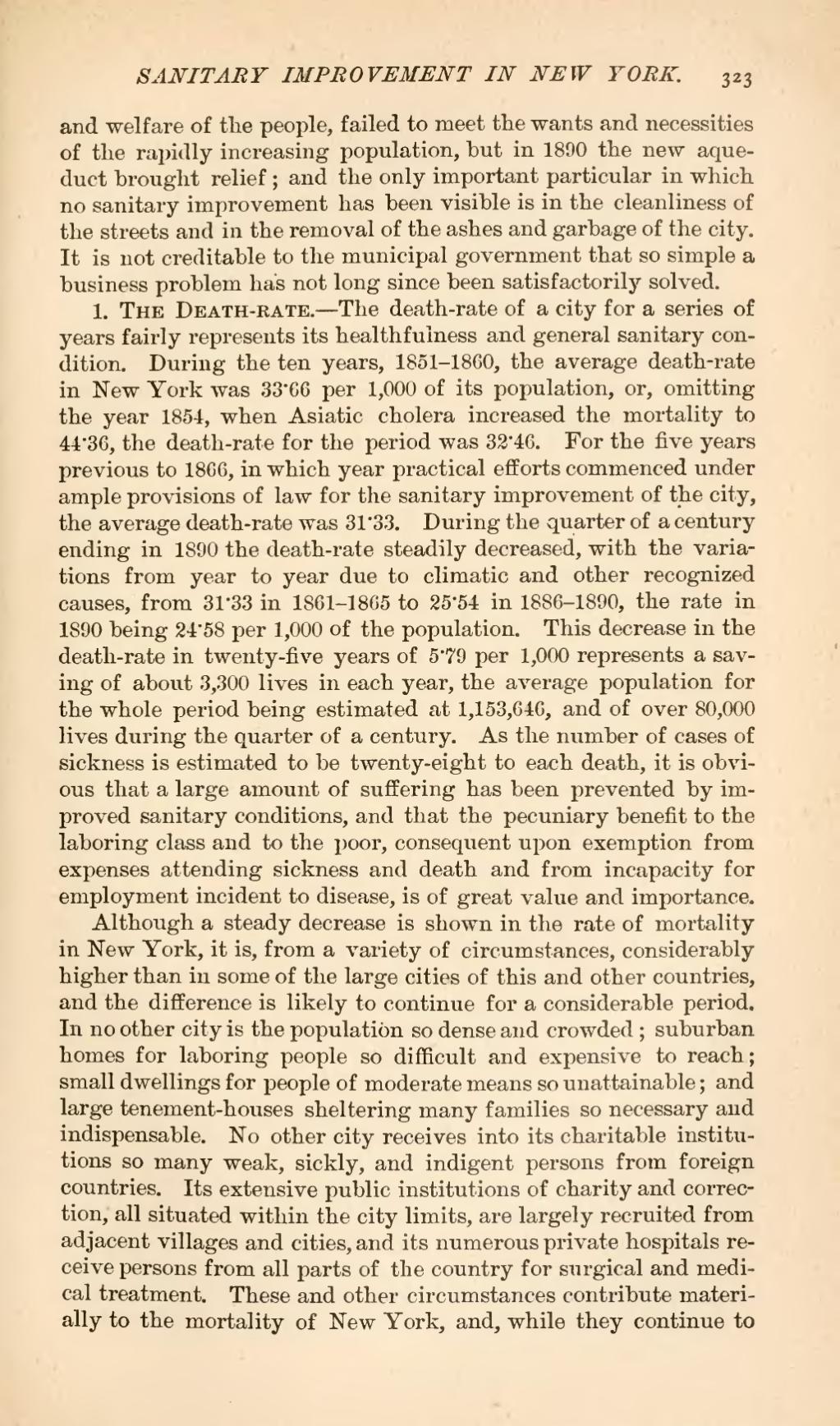and welfare of the people, failed to meet the wants and necessities of the rapidly increasing population, hut in 1890 the new aqueduct brought relief; and the only important particular in which no sanitary improvement has been visible is in the cleanliness of the streets and in the removal of the ashes and garbage of the city. It is not creditable to the municipal government that so simple a business problem has not long since been satisfactorily solved.
1. The Death-rate.—The death-rate of a city for a series of years fairly represents its healthfulness and general sanitary condition. During the ten years, 1851-1860, the average death-rate in New York was 33·66 per 1,000 of its population, or, omitting the year 1854, when Asiatic cholera increased the mortality to 44·36, the death-rate for the period was 32·46. For the five years previous to 1866, in which year practical efforts commenced under ample provisions of law for the sanitary improvement of the city, the average death-rate was 31·33. During the quarter of a century ending in 1890 the death-rate steadily decreased, with the variations from year to year due to climatic and other recognized causes, from 31·33 in 1861-1865 to 25·54 in 1886-1890, the rate in 1890 being 24·58 per 1,000 of the population. This decrease in the death-rate in twenty-five years of 5·79 per 1,000 represents a saving of about 3,300 lives in each year, the average population for the whole period being estimated at 1,153,646, and of over 80,000 lives during the quarter of a century. As the number of cases of sickness is estimated to be twenty-eight to each death, it is obvious that a large amount of suffering has been prevented by improved sanitary conditions, and that the pecuniary benefit to the laboring class and to the poor, consequent upon exemption from expenses attending sickness and death and from incapacity for employment incident to disease, is of great value and importance.
Although a steady decrease is shown in the rate of mortality in New York, it is, from a variety of circumstances, considerably higher than in some of the large cities of this and other countries, and the difference is likely to continue for a considerable period. In no other city is the population so dense and crowded; suburban homes for laboring people so difficult and expensive to reach; small dwellings for people of moderate means so unattainable; and large tenement-houses sheltering many families so necessary and indispensable. No other city receives into its charitable institutions so many weak, sickly, and indigent persons from foreign countries. Its extensive public institutions of charity and correction, all situated within the city limits, are largely recruited from adjacent villages and cities, and its numerous private hospitals receive persons from all parts of the country for surgical and medical treatment. These and other circumstances contribute materially to the mortality of New York, and, while they continue to
